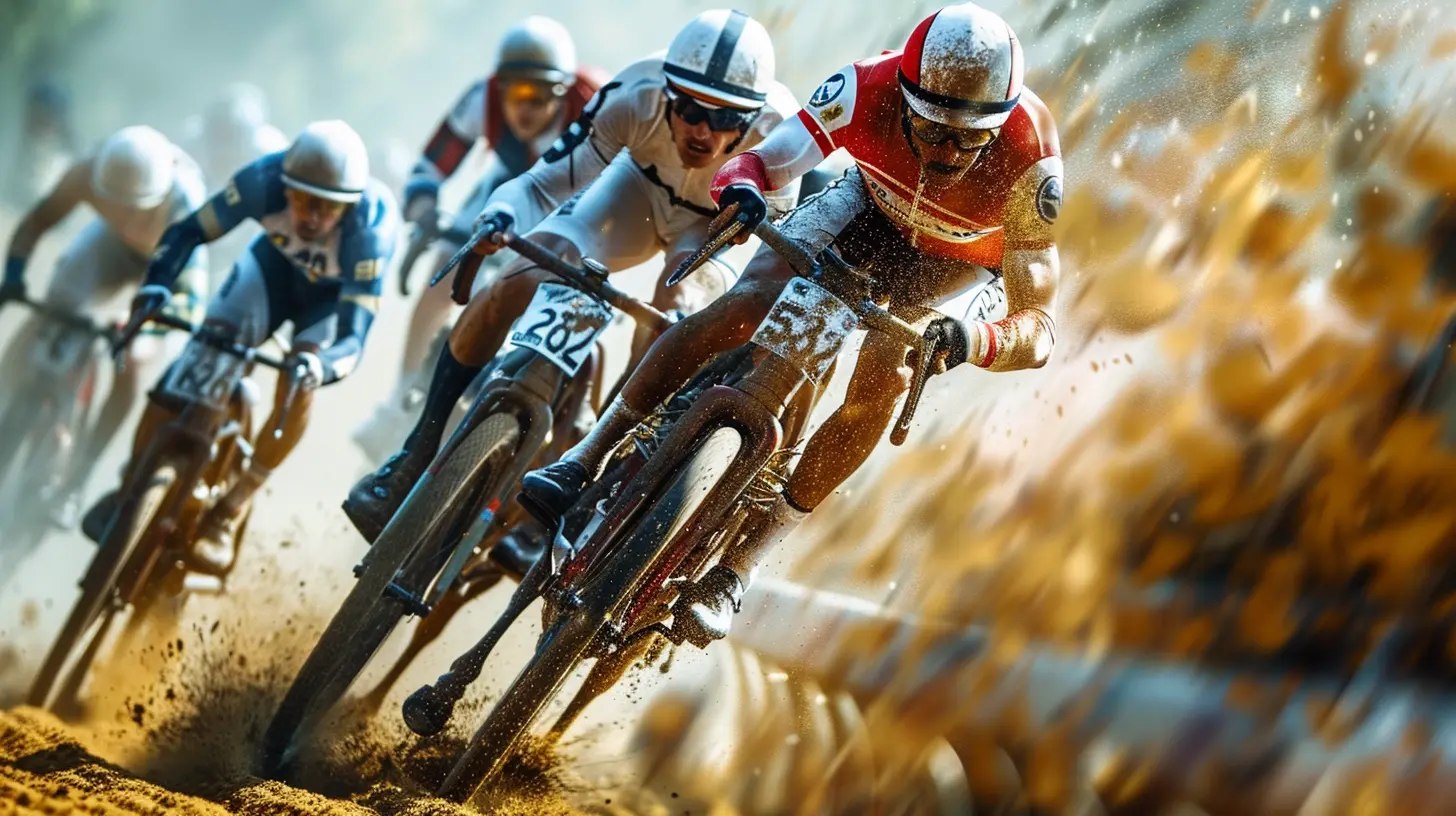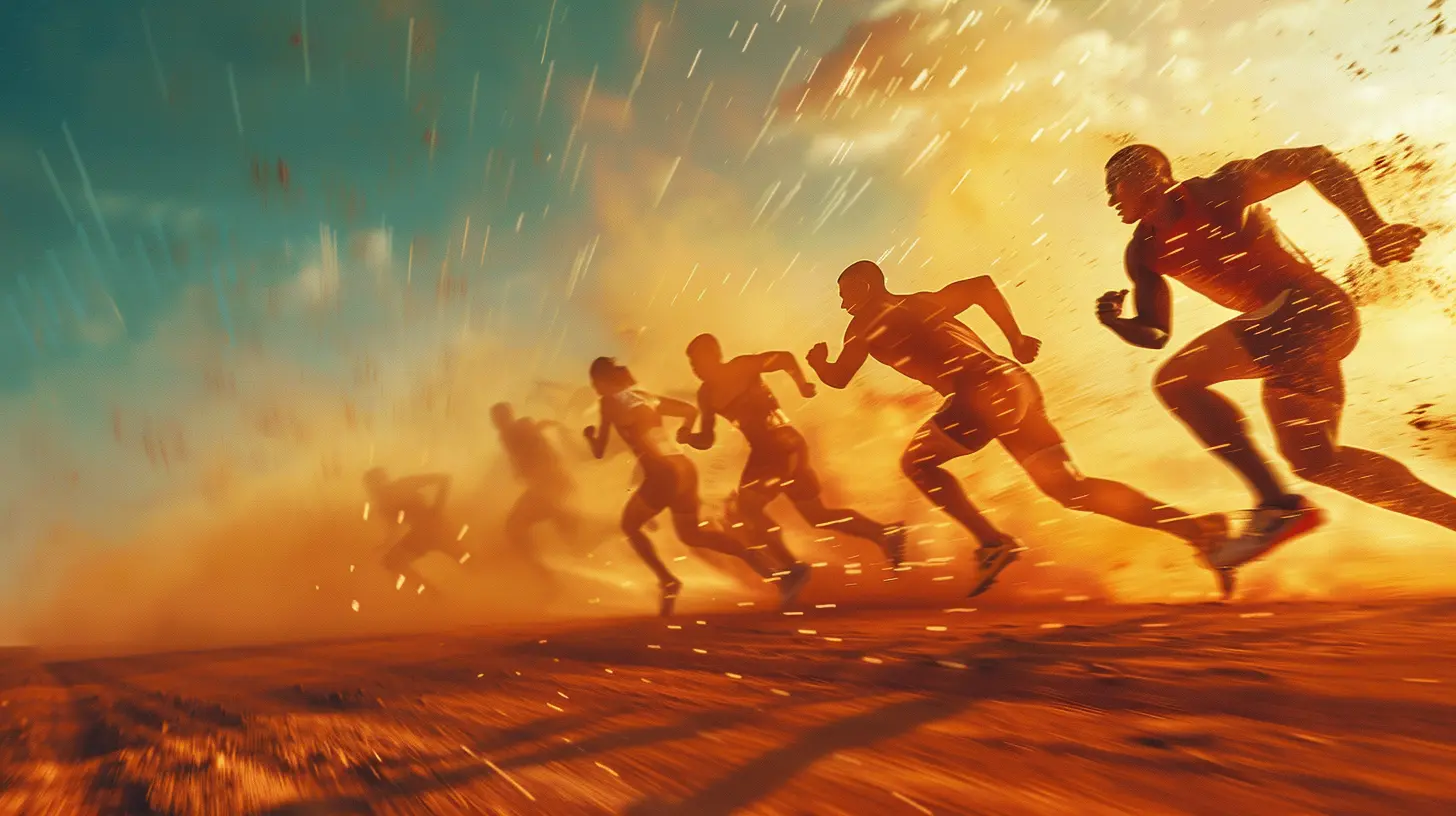World Championships: The Endurance Factor
7 July 2025
Ever watched a World Championship and thought, “How do these athletes keep going like that?” Whether it's on the track, in the water, or across grueling terrains, one common thread weaves through every sport at the highest level: endurance. It's the secret sauce behind record-breaking performances and jaw-dropping comebacks. But what's the real story behind endurance in World Championships? Let's dive in.

What Really Is Endurance?
Endurance isn't just about running the longest or pushing through the toughest moments. It's physical stamina, sure, but it's also mental grit—that ability to dig deep when your body's screaming "enough." It’s what keeps marathoners powering through mile 23, what helps cyclists attack yet another hill, and what drives swimmers to shave milliseconds off lap times.In World Championships, endurance is more than a stat or a number. It's a mindset. It's a lifestyle. It's the make-or-break factor that transforms a good athlete into a great one.

The Two Sides of Endurance: Physical and Mental
Physical Endurance
Let’s be real—if you’re competing at a World Championship level, your body is essentially a high-performance machine. Physical endurance is built through years of training, consistent effort, and pushing the limits of cardiovascular and muscular capabilities.Athletes train with:
- Interval training to boost speed and recovery.
- Strength conditioning to improve resilience and reduce injury.
- High-altitude training to improve oxygen efficiency.
That’s the science part. But no matter how fit you are, endurance isn’t just about stats on a fitness tracker.
Mental Endurance
Now, here's where the magic happens. Mental endurance is the quiet strength that separates champions from the rest of the pack. It’s about staying calm under pressure, staying focused during setbacks, and refusing to quit even when the odds stack up against you.Sabine Lisicki’s tears at Wimbledon, Paula Radcliffe’s heartbreaking moment during the Olympics—these aren’t signs of weakness. They’re proofs of the emotional depth involved in endurance. And when they bounce back, it's a masterclass in mental toughness.

Sports Where Endurance Steals the Show
Marathon Running: The Ultimate Test
Let’s start with the obvious—the marathon. 26.2 miles of sheer willpower. World Championships in long-distance running aren’t just about pace. They’re about knowing your body like an old friend. Runners monitor every breath, every heartbeat.Take Eliud Kipchoge for example. The guy didn’t just run a marathon—he redefined what the human body is capable of. It wasn’t only about speed; it was epic endurance on full display.
Road Cycling: Pain on Two Wheels
Tour de France? Brutal. But World Championship cycling events? Relentless. These athletes race over hundreds of miles, battling wind, elevation, and often, each other’s tactics.Endurance here is about more than legs. It’s about strategy, patience, and recovery. Knowing when to hold back and when to strike is key. And let's not forget—these riders do it day after day. You gotta be built different.
Swimming: Holding Your Breath and Your Pace
You’d think swimming a few laps is easy—until you try sprinting 400 meters in a World Championship pool. With little time to breathe and even less room for error, endurance in swimming means pushing past oxygen deficits while staying technically perfect.Swimmers train for hours a day. Some rack up more miles in water in a week than you probably do on foot. And with races won or lost by fractions of a second, every lap becomes a test of endurance and nerve.
Triathlon and Ironman: The Holy Grail
Talk about going the distance—a triathlon demands running, swimming, and cycling. Back-to-back. No breaks. And then there’s the Ironman, the gladiator-level competition of endurance sports.These athletes are warriors. The endurance here is on another planet. Competing in World Championships means committing to pain and unpredictability—weather, terrain, your own body's limits.

Training for Endurance: It’s a Lifestyle
Think it’s just talent? Nah. Endurance is trained, honed, and built up brick by brick.Most elite-level athletes follow:
- Periodization: Structured training blocks with build-up and recovery phases.
- Nutrition plans: Fueling efficiently with carbs, proteins, and hydration strategies.
- Sleep routines: Recovery is king. No sleep? No gains.
- Mental coaching: Visualization, breathing exercises, and mindfulness.
You can’t cram for this kind of test. You have to live it.
Endurance as a Deciding Factor in World Titles
World Championships are the stage where endurance whispers louder than brute strength. Often, matches aren’t won in the first few minutes—but in the dying seconds.Think about it. How many times have you seen:
- A tennis player come back from two sets down?
- A boxer take punishment for ten rounds and still land a knockout blow?
- A team claw its way back in overtime?
These aren’t just highlights—they’re endurance, showcased in heart-stopping drama.
Evolution of Endurance Over the Years
Back in the day, endurance might’ve been more about natural toughness. Today, it’s a science. Sports science labs, data tracking, AI coaching—athletes now know exactly how to train smarter and recover better.While the human body hasn’t changed that much, our understanding of what it can do has exploded. And that’s made endurance—not strength—the real edge.
Female Athletes and the Endurance Surge
Let’s give a major shoutout here. Female athletes are crushing endurance sports like never before. From ultra-marathons to Ironman competitions, women have shown they’re not only keeping up—they're leading the pack.Scientific studies even suggest that women may be naturally built for endurance, with better fat metabolism and higher pain thresholds. World Championships are increasingly reflecting this shift.
Look at Lucy Charles-Barclay in Ironman, or Courtney Dauwalter in ultra-running. These aren’t just names—they’re endurance icons.
The Unexpected Heroes of Endurance
Not all endurance tales are from the main events.- A substitute player stepping in and running the game.
- A swimmer barely qualifying but delivering a personal best.
- A cyclist pulling through a crash to finish strong.
These stories remind us that endurance isn’t always about medals. Sometimes, it’s just about finishing what you started.
The Role of Fans and Atmosphere
You know what's underrated? The energy from the crowd. Cheerleaders in full voice, fans chanting, flags waving—fans give athletes that extra fuel.When exhaustion hits, sometimes it’s that roar from the stands that lights a fire. Endurance doesn’t operate in a vacuum—it feeds off emotion. And World Championships are emotional rollercoasters.
Recovery: The Unsung Hero
Endurance doesn’t work without recovery. You can’t push and push without pulling back.Top-tier athletes swear by:
- Cryotherapy
- Compression therapy
- Massage and physiotherapy
- Hydrotherapy
And of course, good old sleep. Rest isn’t lazy. It’s strategic. Because every ounce of endurance you build needs to be protected and replenished.
Endurance Beyond Sports
Let’s be honest—we all need endurance. In life, in work, in health. Watching World Championships? It's not just inspiring—it’s a lesson.We see people breaking limits, fighting through the wall, and showing us that we can do more than we think. Endurance is beyond the finish line. It’s life fuel.
Key Takeaways: What Endurance Teaches Us
1. It’s not about how you start—it’s how you finish.2. Mental strength can outlast physical fatigue.
3. Consistency beats intensity.
4. Rest is just as important as training.
5. No matter the sport, endurance is the unspoken MVP.
Conclusion: Respect the Grind
World Championships are dazzling. But behind the medals, there’s sweat, sacrifice, and unreal levels of endurance. It’s the silent work before the spotlight. The grind behind the glory.So next time you watch a championship event, pay attention to that final lap, final round, or last-second decision. That’s not just skill—it’s endurance. And it’s nothing short of incredible.
all images in this post were generated using AI tools
Category:
World ChampionshipsAuthor:

Nelson Bryant
Discussion
rate this article
1 comments
Sarina Ward
The article effectively highlights the critical role of endurance in the World Championships, emphasizing how mental resilience often distinguishes champions from their competitors under pressure.
July 23, 2025 at 3:54 AM

Nelson Bryant
Thank you for your insightful comment! I completely agree—mental resilience is indeed a key factor that sets champions apart in high-pressure situations.


